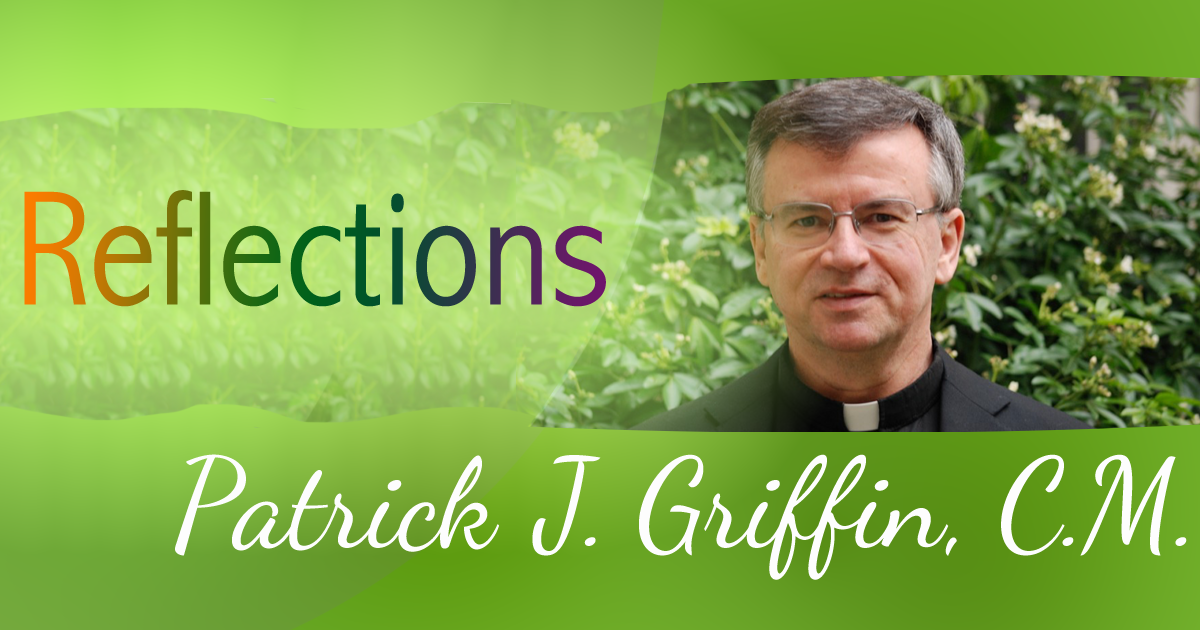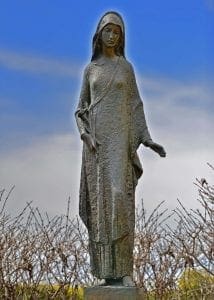
In college, I had one course in Art Appreciation. Since my own background for understanding art left much to be desired, this course proved valuable. One remark remains with me: Once an artist finishes a work, he has lost control over it; now it belongs to the viewer. What the artist intended to portray does not limit the vision or imagination of the observer. That is a helpful piece of learning. Some works of art tell a story and some engage an emotion (sometimes both). The reaction can differ from person to person. The point is, I do not need to know what the artist intended, I only need to be attentive to what I see or read or hear.
The statue of Mary, the Mother of Jesus, which stands along the main road of the University and adjacent to the Public Safety booth,  captures my attention. Sometime, take a close look at it. It clearly portrays a young, slender Mary. In her right hand, she has a lily which presses against her body. I see a strap strung across her chest. She seems to wear a simple shoulder bag!
captures my attention. Sometime, take a close look at it. It clearly portrays a young, slender Mary. In her right hand, she has a lily which presses against her body. I see a strap strung across her chest. She seems to wear a simple shoulder bag!
That observation sets my mind clicking. I immediately associate this Mary with the young woman who has seen the angel and now travels to help her aged cousin Elizabeth in her pregnancy. Christians often call this trip “the Visitation.” The idea of Mary on this trek engages me. According to the Biblical story, she has already agreed to be the mother of Jesus and so she, too, is “with child.”
Simply said: she is an unwed mother. Her pregnancy will bring shame upon her family; Joseph, her betrothed, will feel betrayed; the law of her people will be harsh. Most of all, however, it would harm her reputation. Perhaps these thoughts and many more would be playing in her head as she journeyed to help Elizabeth.
On the other hand, she might be thrilled with the substance of her situation and what it could mean. She had encountered an angel—really, an archangel—who told her of God’s love for her and who asked her permission to work in a special way in her life. The promises made to her people for so long were finally going to be realized, and it would be done with her obedience and surrender to the divine will. She held life within her. How great and good God is!
The statue makes me think a lot about young people and journeys, about decisions which change a person’s life, and about unknown futures. Somehow, including Mary in that vision makes it less frightening and more hope-filled. I find it easy to put her on campus and to understand that her tale is not completely foreign to our setting.
Without piety, her simplicity and hope find a place at a Catholic University which welcomes peoples with challenges and stories. I like this piece of art, and I like its positioning. There is a place for Mary in our midst.
(This essay was written for the student newspaper at St. John’s University, The TORCH.)







0 Comments